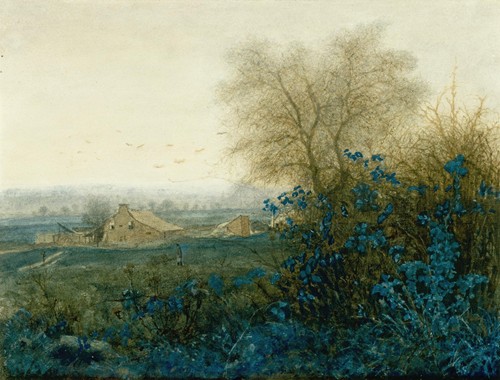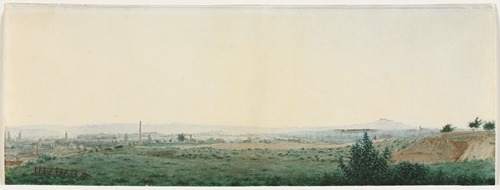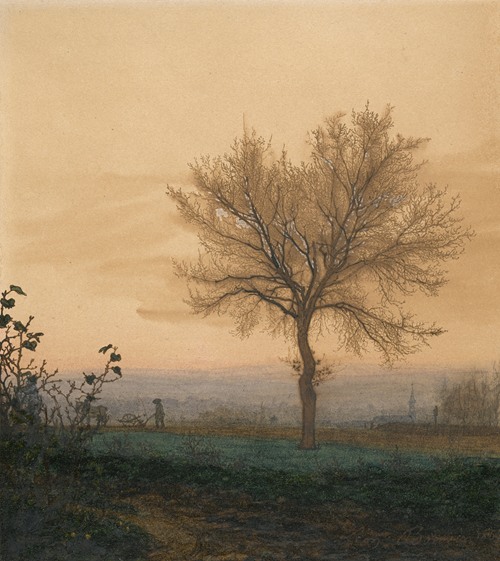
Charles Léon Bonvin was a French watercolor artist known for genre painting, realist still life and delicate and melancholic landscapes.
Bonvin was born in Vaugirard (at the time a municipality on the outskirts of Paris, today part of the city) in humble circumstances. He was the son of a constable and a seamstress who owned a poor guinguette. He had numerous siblings and lived in a barren plain; the household money was scarce.
As a young boy he began making small charcoal sketches, and gradually ink drawings. His older step brother François Bonvin encouraged him to continue and provided him with paints and the advice to carefully study the old masters of the Dutch Golden Age.
He probably attended some of the free classes offered by l'École royale gratuite de dessin created by Bachelier but was mostly self-taught. He also learned to play music on a harmonium.
In 1861 Bonvin married, soon had children, and worked as an innkeeper. The young couple struggled; the inn lost money; anguish set in. Yet painting in the stillness of early morning, at dusk or at night, Bonvin was able to create numerous genre paintings echoing the manner of Jean Siméon Chardin, meticulous still life studied with the precision of a botanist and subtle landscapes capturing fleeting atmospheric effects and solitude. These were mostly fragile watercolors for affordability reasons, oil paints being more expensive.
He approached gallerists on rue Laffitte and rue du Bac, but he made few sales of his watercolors. In January 1866, Bonvin traveled to Paris again to offer his watercolors to a dealer, who rejected them as too dark. Desperate, he hung himself the next day in the forest, on January 30, 1866, and was discovered a few days later; he was 31 years of age.




